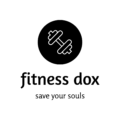Have you ever finished a workout feeling utterly spent, yet strangely invigorated? Like you pushed yourself beyond what you thought possible, and your body is screaming for results? That’s the magic of deep workouts.
Deep workouts are more than just breaking a sweat. They’re a targeted approach to exercise, designed to push your muscles to their absolute limit, triggering significant adaptations and propelling you further on your fitness journey. They’re not for the faint of heart, but the rewards are undeniable.
What Exactly Are Deep Workouts?
Deep workouts differ from traditional workouts by demanding more from your body. They focus on three key principles:
- Intensity: Deep workouts push you beyond your comfort zone, reaching a state of muscular fatigue. This can involve high reps with moderate weight, low reps with heavy weight, or short bursts of intense activity followed by brief rest periods.
- Focus: Deep workouts require intense mental focus. You should be acutely aware of your form, breathing, and the targeted muscles to maximize results.
- Extended Effort: Deep workouts typically last longer than your average gym session. They may involve longer sets, shorter rest periods, or high-intensity intervals repeated multiple times.
Why Should You Consider Deep Workouts?
The benefits of deep workouts are numerous and well-documented by science. Here’s how deep workouts can transform your fitness:
- Muscle Growth and Strength: Deep workouts stimulate muscle growth by causing microscopic tears in muscle fibers. As these fibers repair, they become stronger and more resilient. Studies have shown deep workouts, particularly weight training with low reps and high weight, are highly effective for building muscle mass [scholarly article on weight training and muscle growth].
- Cardiovascular Health Boost: Deep workouts, especially HIIT (High-Intensity Interval Training), significantly elevate your heart rate and improve cardiovascular health. This translates to better oxygen utilization, improved endurance, and a lower risk of heart disease [scholarly article on HIIT and cardiovascular health].
- Mental Toughness and Focus: The intense nature of deep workouts strengthens your mind-body connection. Pushing through fatigue and maintaining focus during a deep workout builds mental resilience, which translates to other areas of your life [article on the mental benefits of exercise].
- Enhanced Metabolism and Fat Burning: Deep workouts create an “afterburn” effect, where your body continues to burn calories even after you’ve finished exercising. This prolonged metabolic boost contributes to weight loss and increased fat burning [article on the afterburn effect].
- Improved Sleep Quality: Deep workouts can improve sleep quality by promoting deeper, more restful sleep. Strenuous exercise helps to tire your body and mind, leading to a more restorative sleep cycle [article on exercise and sleep quality].
- Boosted Athletic Performance: Deep workouts specifically designed for athletes can help improve power, speed, agility, and overall athletic performance. By incorporating elements like plyometrics and resistance training, athletes can reach their full potential [article on deep workouts for athletes].
Deep Workouts: Are They for Everyone?
Deep workouts are surprisingly adaptable. While they’re often associated with advanced athletes, with proper modifications, they can benefit people of all fitness levels:
- Beginners: Beginners can start with bodyweight exercises or lighter weights, focusing on proper form and gradually increasing intensity over time.
- Intermediate: Those with some experience can delve into more challenging exercises, higher weights, or shorter rest periods.
- Advanced: Advanced exercisers can push boundaries with high-intensity training, heavy weights, and complex workout routines.
However, it’s important to listen to your body. If you’re new to exercise, consult a doctor before starting deep workouts. Always prioritize proper form to avoid injury, and don’t hesitate to modify exercises to suit your fitness level.

Addressing Concerns About Deep Workouts:
Deep workouts might seem intimidating, and some concerns are valid:
- Injury Risk: Deep workouts can increase injury risk if form is compromised. Always prioritize proper technique and don’t hesitate to modify exercises if needed.
- Overtraining: Deep workouts can lead to overtraining if you don’t incorporate proper rest and recovery. Schedule rest days, utilize active recovery techniques like stretching or light cardio, and listen to your body.
The key to safe and effective deep workouts is proper planning, gradual progression, and listening to your body’s limitations.
Taking a Deep Dive into Deep Workouts:
Now that you understand the core principles, let’s explore various deep workout styles:
- High-Intensity Interval Training (HIIT):
Here’s a sample HIIT workout you can try at home:
- Warm-up: 5 minutes light cardio (jogging, jumping jacks) and dynamic stretches
- Workout:
- Set a timer for 20 minutes.
- Alternate between 30 seconds of high-intensity exercise (sprints, jumping squats, burpees) and 60 seconds of rest (walking, light jog).
- Repeat this cycle for 10 rounds.
- Cool-down: 5 minutes static stretches (holding stretches for 20-30 seconds)
- Weightlifting with Low Reps and High Weight: This approach focuses on progressive overload, challenging your muscles with heavier weights for fewer repetitions. This is ideal for building strength and muscle mass.
Here’s an example weightlifting routine with low reps and high weight:
- Squats: 4 sets of 5 repetitions with 80% of your 1-rep max (the heaviest weight you can lift for 1 repetition)
- Bench Press: 4 sets of 5 repetitions with 80% of your 1-rep max
- Deadlifts: 4 sets of 5 repetitions with 80% of your 1-rep max
- Rest: 2-3 minutes between sets
Remember: These are just samples. You can adjust exercises, weights, and rest periods based on your fitness level and goals.
- Slow-Twitch Training: This method focuses on engaging slow-twitch muscle fibers, which are responsible for endurance. It involves exercises performed at a slower pace (60-80% of 1-rep max) for higher repetitions (12-15 reps) with longer rest periods (2-3 minutes). This can improve muscular endurance and overall stamina.
- Plyometric Training (Advanced): This advanced training style involves explosive movements like jump squats, box jumps, and depth jumps. Plyometrics are great for developing power, speed, and agility, but they should only be attempted by experienced exercisers due to the high impact on joints.

- Circuit Training with Minimal Rest: Circuit training combines multiple exercises performed back-to-back with minimal rest (30-60 seconds). This keeps your heart rate elevated, burns calories efficiently, and targets different muscle groups in a single session.
Here’s a sample circuit training routine with minimal rest:
- Push-ups: 3 sets of 10 repetitions
- Lunges (alternating legs): 3 sets of 12 repetitions per leg
- Dumbbell rows: 3 sets of 10 repetitions per arm
- Rest: 30 seconds between exercises, 1 minute rest after each circuit
- Combining Cardio and Strength Training: Deep workouts can incorporate both cardio and strength training elements for well-rounded fitness. This can involve supersets (performing a cardio exercise followed immediately by a strength exercise) or alternating cardio and strength training blocks within your workout.
Deep Workout Training Principles:
To maximize the effectiveness and safety of deep workouts, consider these core principles:
- Proper Form is Paramount: Always prioritize proper form over lifting heavier weights or pushing yourself beyond your limits. Incorrect form can lead to injury and hinder your progress. If an exercise feels uncomfortable, adjust the weight, modify the movement, or seek guidance from a certified personal trainer.
- Progressive Overload: To continuously challenge your muscles and elicit growth, gradually increase the intensity (weight, reps, sets) of your workouts over time. This can be done by adding weight, increasing reps/sets, or shortening rest periods.
- Deep Breathing Techniques: Proper breathing during deep workouts is crucial for oxygen delivery to your muscles and maximizing performance. Focus on inhaling through your nose during exertion and exhaling forcefully through your mouth during the resting phase of an exercise.
- Mind-Muscle Connection: Focus on the muscles you’re working during each exercise. This mind-muscle connection helps to maximize muscle activation and engagement, leading to better results.
- Rest and Recovery: Deep workouts are demanding on your body. Scheduling rest days is essential for allowing your muscles to repair and rebuild. Utilize active recovery techniques like light cardio, yoga, or foam rolling to facilitate recovery and prevent overtraining.
Fueling Your Deep Workouts:
Nutrition plays a critical role in deep workouts. Here’s what you need to consider:
- Pre-Workout Meal: Top up your energy stores with a pre-workout meal 1-2 hours before exercising. Aim for a balanced meal with complex carbohydrates (whole grains), protein (lean meat, fish, eggs), and healthy fats (nuts, avocado) to provide sustained energy.
- Post-Workout Meal: Following a deep workout, your body is in prime repair and recovery mode. Consume a post-workout meal within 30-60 minutes to replenish glycogen stores (carbohydrates) and promote muscle repair (protein). Include lean protein sources, complex carbohydrates, and healthy fats in your post-workout meal.
Here’s an example post-workout meal:
- Grilled chicken breast (protein)
- Brown rice (complex carbs)
- Roasted vegetables (micronutrients)
- Avocado (healthy fats)
- Hydration: Staying hydrated is crucial before, during, and after deep workouts. Drink plenty of water throughout the day, especially on workout days. Aim to consume water before, during, and after your workout to prevent dehydration and optimize performance.
Taking Your Deep Workout Journey Further:
Deep workouts require not only physical effort but also a strong mental game. Here’s how to conquer your deep workout journey:

- Mental Preparation: A positive mindset is key to pushing through the intensity of deep workouts. Visualization techniques can be powerful tools. Imagine yourself successfully completing your workout, feeling the satisfaction of accomplishment. Setting realistic and specific goals will keep you motivated and help you track your progress. Break down larger goals into smaller, achievable milestones to celebrate along the way.
- Planning and Scheduling: Plan your deep workouts into your weekly schedule, ensuring adequate rest days between sessions. Consistency is key to progress, so find a schedule that works for you and stick to it.
- Variety is Key: To avoid plateaus and keep your workouts interesting, incorporate a variety of deep workout styles and exercises. This will challenge your muscles in different ways and prevent boredom.
- Track Your Progress: Monitoring your progress is essential for staying motivated and evaluating the effectiveness of your deep workout routine. Keep a workout log to track exercises, weights, reps, sets, and how you’re feeling after each session. This data will help you adjust your routine as needed and celebrate your achievements.
Safety Considerations:
Always prioritize safety when engaging in deep workouts. Here are some key points to remember:
- Listen to Your Body: Don’t push yourself to the point of pain. Pain is a sign that something is wrong. Stop the exercise, rest, and consult a doctor if necessary.
- Warm-up and Cool-down: Proper warm-up prepares your body for exercise, while a cool-down helps your body return to a resting state. Include dynamic stretches in your warm-up and static stretches in your cool-down routine.
- Seek Guidance: Consider working with a certified personal trainer, especially if you’re new to deep workouts. A trainer can personalize a program based on your fitness level and goals, ensure proper form, and help you avoid injuries.
Conclusion:
Deep workouts offer a potent tool to elevate your fitness journey. They push you beyond your comfort zone, triggering significant muscle growth, improved cardiovascular health, and enhanced overall fitness. By incorporating the principles and strategies outlined above, you can unlock the transformative power of deep workouts and achieve your fitness goals.
Ready to take the plunge? Embrace the challenge, commit to consistency, and get ready to experience the incredible results that deep workouts can deliver. Remember, the most important factor is to listen to your body, prioritize safety, and enjoy the process of pushing your limits and reaching your full fitness potential.
Call to Action:
- Share your deep workout experiences in the comments below! Let us know what deep workout styles you enjoy the most and the positive impacts you’ve experienced.
- Download our free Deep Workout Sample Routine! We’ve created a sample deep workout routine you can try at home. Get it now and experience the power of deep workouts firsthand! (Check Now)
- Subscribe to our blog for more fitness tips and advice! Stay motivated and informed with our regular blog posts packed with valuable fitness knowledge and inspiration. ( Fitnessdox.com )


